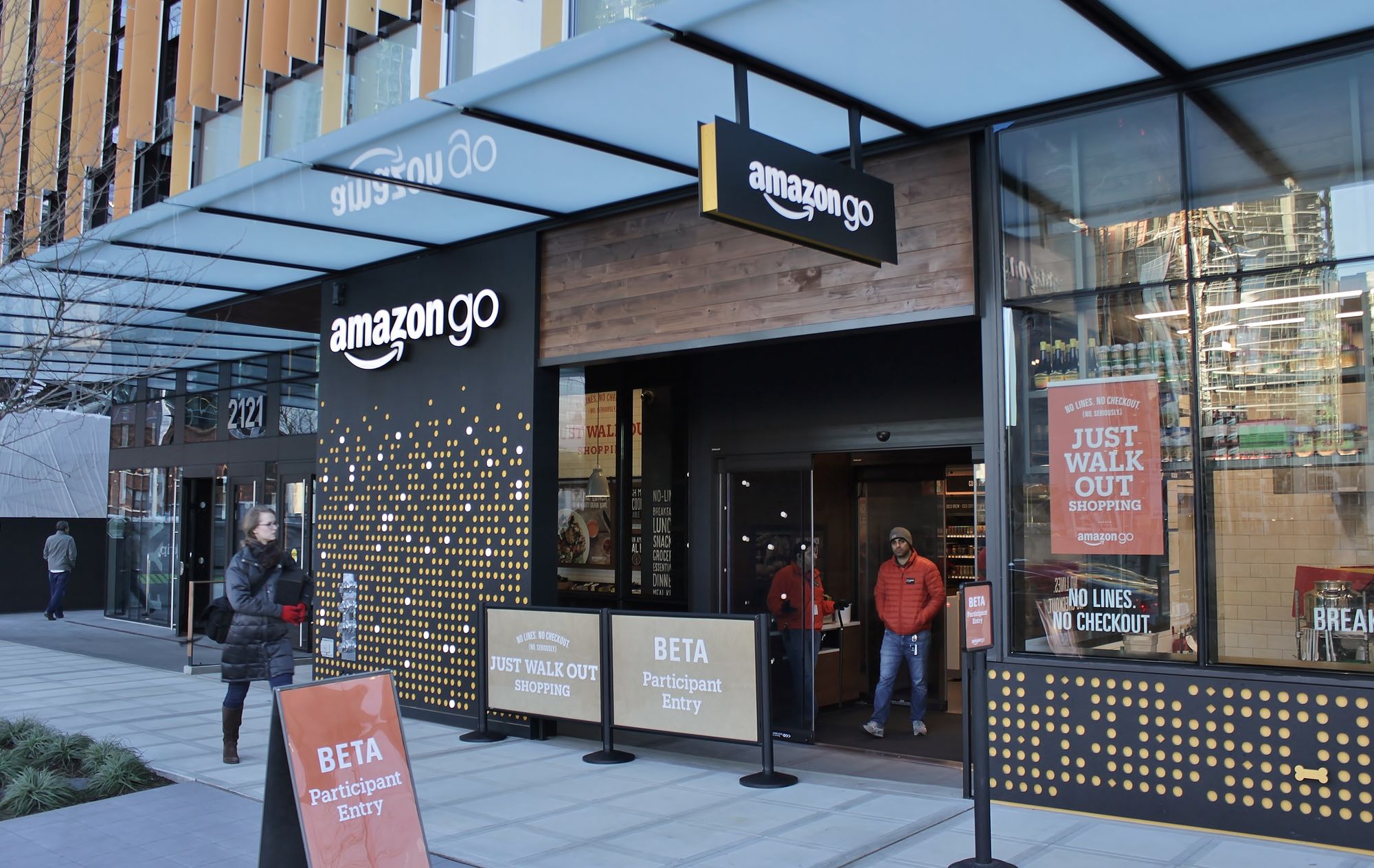2 New Killer Problems Explaining Why Amazon is Closing Stores
Explore the reasons behind Amazon's store closures. Mike Parsons sheds light on the challenges of retail real estate and staffing in the U.S. and U.K. Uncover the intricacies of brick-and-mortar retail for e-commerce giants and how industry leaders navigate evolving landscapes.

In the expansive world of retail, where digital and physical realms intertwine, navigating the intricacies can be likened to walking a tightrope. While digital giants like Amazon have set benchmarks in the e-commerce space, the traditional brick-and-mortar landscape offers its unique challenges. Amazon's recent closures of several physical stores in the U.S. and U.K. have raised eyebrows and led to pertinent questions about the viability of traditional retail for digital-first companies. Let's delve deep into this arena and understand the practical reasons behind such decisions.
"The reality is that stores are not going away, but the high costs of rent, personnel, and inventory make it incredibly difficult to find a sustainable business model." – Harley Finkelstein, COO of Shopify.
The Tangible Costs of Brick-and-Mortar Stores
Real Estate: The Premium Price Tag
Dive into any bustling city or suburb, and the prime retail spaces are either occupied or have an outrageous price tag. According to a report by the Real Estate Board of New York (2022), premium retail leasing prices in major cities have steadily increased over the past decade. Securing a lease for such properties is just the tip of the iceberg. Maintenance, utilities, insurance, and unexpected expenses related to physical premises can pile up quickly. For a business model that thrives on digital efficiency and minimized overheads, these escalating costs can be hard to justify.
Retail real estate prices in the U.S. surge primarily because of the intense competition for prime locations in high-traffic areas. Limited availability and high demand drive these costs upward. Additionally, development costs, influenced by labor, materials, and a complex permitting process, further elevate the expenses. Property taxes in many U.S. regions also contribute to the high costs of owning or leasing retail space.
Strict zoning laws limit retail space in many cities, pushing prices up. Furthermore, common lease structures, like triple net leases, place additional financial burdens on tenants, encompassing property taxes, insurance, and maintenance on top of base rent. Lastly, rising land values, especially in urban centers, and future growth expectations of certain areas shape the pricing landscape, making retail real estate a significant expenditure for businesses in the U.S.
Staffing: More than Just Numbers
Unlike the digital space, where automation and algorithms can handle a significant chunk of operations, physical stores demand human interaction. The Bureau of Labor Statistics (2023) notes that the retail sector has one of the highest staffing needs, with wages also increasing. From store managers to salespeople and inventory handlers, the human resource requirement is substantial. Factor in training, benefits, and rising wages in numerous locations, and the staffing costs can mount significantly.
Retailers in the U.S. face high staffing costs for several reasons. First, in many urban areas, the high cost of living requires retailers to pay competitive wages to attract and keep workers. On top of that, they often provide expensive benefits, particularly health insurance, given the high healthcare costs in the U.S.
Frequent turnover in the retail sector means retailers constantly hire and train new employees, incurring both direct and indirect expenses. As the labor market tightens, retailers compete for talent, offering better compensation packages. This competition intensifies because American consumers expect high-quality customer service. Retailers, therefore, invest in well-trained, higher-paid staff to meet these expectations. Even with the rise of automation and online shopping, the retail sector still demands specialized skills, especially in customer service and technology, pushing wages further up.
"The hardest thing in retail is the people equation." – Doug McMillon, CEO of Walmart.

Revenues Versus Expenditures: The Crux of the Matter
For a company to venture into any new domain, the revenue prospects should ideally outweigh the potential costs. In Amazon's case, the physical stores, while offering a tangible touchpoint for customers, didn't seem to bring in sufficient incremental revenue to offset the substantial costs. While e-commerce operations benefit from a global audience, a physical store's customer base is geographically limited, inherently capping its revenue potential.
Business Model Fit: Aligning the Stars of Profitability
The concept of Business Model Fit isn't just a buzzword. It's the harmonious alignment of costs, resources, and revenue streams such that profitability isn't an occasional highlight but a consistent trend. Achieving this fit means that a company, even when scaled up, remains not just viable but also profitably robust.
Amazon's foray into physical retail seems to have misaligned this fit. While the company has never shied away from experimenting – a trait that has largely contributed to its global success – it's evident that every experiment comes with lessons. In this case, the lesson might reaffirm its digital-first strength.
Amazon's Financial Health: Far from Bleak
It's crucial to dispel any notions that Amazon's retreat from physical spaces signifies financial distress. The numbers speak for themselves. The third quarter of 2023 saw Amazon pull in a staggering $143.1 billion in revenue, marking a confident 13% rise from the previous year. Even more remarkable is the surge in profits from $2.9 billion a year ago to $9.9 billion. This upward trajectory, mirrored by a nearly 40% rise in stock prices this year, showcases Amazon's financial prowess and adaptability.

Strategizing for the Future: Efficiency over Expansion
It's a given that companies, especially of Amazon's stature, don't operate on whims: data, research, and long-term visions back strategic pivots. Amazon's move away from physical retail might be less about the shortcomings of brick-and-mortar and more about doubling down on areas of strength.
The world of e-commerce is still burgeoning. With advancements in technology, changing consumer behaviors, and the constant evolution of logistics and supply chains, there's ample room for innovation and growth in the digital space. By channeling resources and focusing on its primary domain, Amazon seems to set the stage for further consolidation and dominance in the e-commerce sector.
Adapting to the Landscape
The dynamism of the retail sector means that companies, regardless of their size or stature, must remain agile. It's not about chasing every avenue but understanding which paths align best with inherent strengths. Amazon's step back from physical retail is a testament to this adaptability.
The key takeaway here isn't the challenges of brick-and-mortar. It's about recognizing one's core competencies and adapting strategies accordingly. The retail landscape will continue to evolve, with digital and physical realms offering unique opportunities and challenges. For businesses, the goal remains to navigate this landscape with practicality, confidence, and a keen eye on long-term sustainability and profitability.


